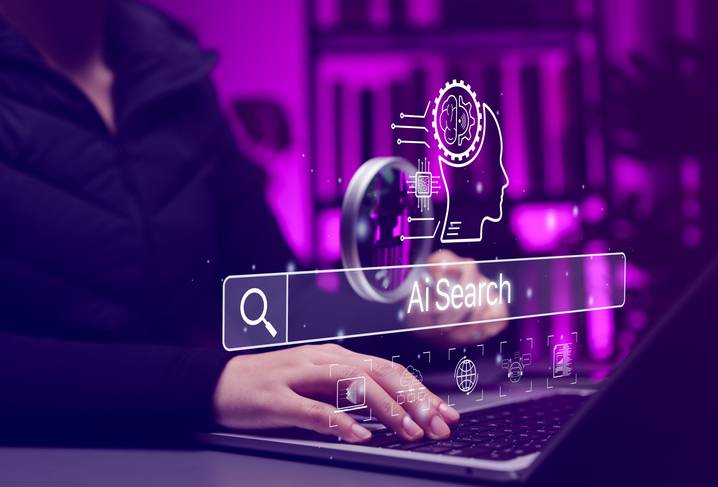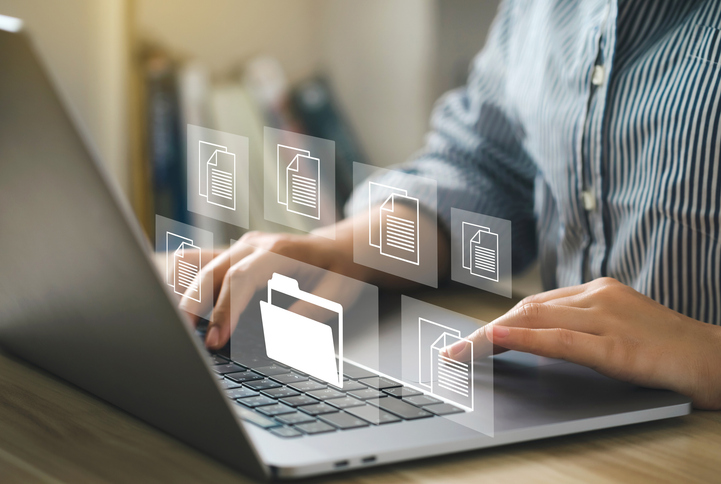Today, public schools are expected to do more with less, making operational efficiency a main priority. But with the burdens of outdated processes, disparate data systems and piles of paperwork, districts are looking toward Enterprise Resource Planning (ERP) software to bring clarity and control to operations.
This post will explore how ERP for schools can transform resource management and improve productivity. Topics include:
- Benefits of ERP
- Challenges of Implementation
- Getting Started

How to Create an ERP Implementation Project Plan
Download this guide to discover a roadmap for starting on your digital transformation journey with ERP.
The Administrative Burden in Public Schools
Every classroom activity is supported by a wide variety of essential administrative processes. These include:
- Managing staff payroll and benefits
- Tracking student records
- Budget planning and financial reporting
- Supplies procurement
- Facilities maintenance
- Regulation compliance
Schools often use separate systems or manual processes to manage these functions. But this separation can result in inefficiency and errors. When information is siloed, data must be transferred manually between systems. This increases the risk of duplication, miscommunication and delays. Over time, these inefficiencies add up, costing both time and resources. Without a way to bring all these systems together, even simple tasks like report generation or purchase order processing can become overly complicated.

What is ERP for Schools and How Does It Help?
ERP software centralizes these administrative functions into a single platform. Branching out from the private sector, modern ERP systems have evolved to meet the needs of public organizations.
Education-focused ERP systems include modules designed for school operations, such as finance, HR, procurement and data management. Through this integration, schools can improve communication among departments while ensuring access to key information and reducing manual efforts. Administrators gain a comprehensive view of their organization, supporting planning, transparency and accountability.
In a school setting, ERP software can unify core areas like:
- Finance & Accounting
- Human Resources
- Procurement & Inventory
- Facility Management
- Student Information Management (integrated into SIS systems)
With the right ERP solution in place, data can be entered into the system once and immediately shared across different departments. Staff can access accurate, updated information, improving collaboration, saving time and increasing accuracy.
Ready to start your digital transformation journey?
Benefits of ERP for Schools: From Paperwork to Productivity
- Improved Efficiency Across the Board
By unifying key functions into a single system, ERP helps to increase efficiency by eliminating redundant data entry, reducing errors and enabling real-time access to accurate information. Staff saves time through automated tasks like payroll and purchase orders. With centralized data and customizable reports, school leaders can make faster, data-based decisions.
- Better Data for Better Decisions
ERP systems provide up-to-date information through dashboards and reporting tools which help administrators make informed decisions. With ERP key data is just a few clicks away with customizable, user-specific views. Alerts and visualization tools make it easier to forecast trends and plan proactively. This level of data insight enables leaders to respond quickly to problems, optimize resources and drive improvement.
- Reduced Administrative Overhead
Faculty and administrators are often bogged down by administrative tasks that pull focus from teaching and student engagement. ERP systems help reduce this situation by streamlining processes such as course scheduling, grant management, faculty leave requests, and student records administration. Tasks that once required manual coordination across departments can now be handled with a few clicks, improving efficiency across the organization.
- Stronger Compliance and Accountability
Public schools face audits, funding penalties, or loss of accreditation if they fail to meet state and federal regulation compliance standards. ERP systems help schools track and report on these obligations including financial transactions, personnel changes and procurement processes.
- Enhanced Communication and Collaboration
ERP systems improve collaboration in public education institutions by centralizing data and streamlining communication across departments. With shared access to real-time information, staff can coordinate effectively without back-and-forth emails and manual updates. An integrated approach breaks down information silos and reduces miscommunication.
ERP Challenges to Expect—and Overcome
Of course, implementing ERP software in a public education setting is not without its challenges. From securing employee buy-in to justifying cost, it’s important to be aware of the difficulties that may occur:
- Change Management: Transitioning from manual processes to a digital system requires training and buy-in from staff.
- Cost and Procurement: ERP systems can represent a large investment. Schools must carefully evaluate vendors and consider long-term value versus upfront cost.
- Customization Needs: Education is not a one-size-fits-all industry. A good ERP solution should be adaptable to workflows and reporting requirements specific to your organization.
How to Get Started
Implementing the right ERP system into your organization is an important step toward streamlining operations and improving efficiency. But successful implementation depends on careful planning. Taking the right steps early on and aligning your search to your unique requirements and goals can help ensure the project’s success and deliver long-term value.
If you’re considering ERP for your school or district, here are a few first steps to guide your planning process:
- Conduct a Needs Assessment: Map out your current administrative processes and identify pain points. What tasks are duplicated? What reports are difficult to compile?
- Engage Stakeholders: Include staff from departments including finance, HR, IT, and school administration in the planning process. Their input will shape your requirements and help drive end-user adoption.
- Explore Education ERP Vendors: Look for vendors that understand education and offer modules specific to your needs (e.g., budgeting, payroll, facility management).
- Pilot the System: Start with one or two departments or schools before full implementation. This allows for adjustments and builds confidence among users.
It’s Time to Work Smarter
ERP systems are helping schools reclaim time, resources, and energy that can be reinvested in students. By embracing modern ERP technology, schools are not only streamlining operations—they’re creating a more agile, transparent, and future-ready education system.
If your organization is still drowning in spreadsheets and manual processes, now is the time to take the first step toward smarter operations. Ultra Consultants can help guide you in choosing the right ERP solution and implementing it seamlessly across your organization—driving measurable improvements in performance, resource management, decision-making, and cost control. Reach out to us today to start making the shift from paperwork to productivity.
Table of Contents
More ERP material...
Generative AI in Manufacturing
This post will examine why managing quality records outside of an ERP…
AI in Food and Beverage Manufacturing
Discover how AI is revolutionizing food and beverage manufacturing, enhancing quality, reducing…
How ERP for Quality Control Eliminates Manual Documentation Chaos
This post will examine why managing quality records outside of an ERP…



